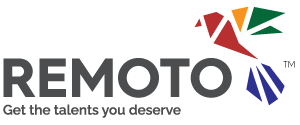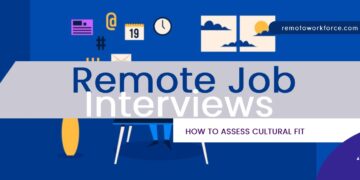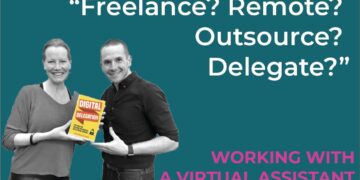When you’re building a remote team, it’s easy to focus only on skills and experience. After all, you want people who can hit the ground running.
But here’s the catch: cultural fit is just as crucial—if not more. Why? Because no matter how skilled a person is, they’ll struggle to thrive in an environment that doesn’t resonate with their values, communication style, or work approach.
Cultural fit helps teams, particularly when face-to-face interactions are infrequent. It ensures your team members share common goals, complement each other’s work styles, and feel aligned with your company’s purpose. But achieving this fit in a virtual environment isn’t as simple as having coffee chats or office tours. It requires intentional strategies.
With the right plan, you can build a team that not only does well but also feels like it fits into your company’s culture. Let’s analyze how to make it happen.
Define Your Culture Before You Recruit
If you haven’t clearly defined your company culture, it’s tough to find candidates who align with it.
Start by expressing your core values. Do you prefer a fast-paced and innovative work environment, or do you value a good work-life balance and steady career growth? Identify your communication style, whether it’s formal and structured or casual and collaborative. Document your expectations around behaviors, decision-making, and teamwork.
Once you’ve mapped out these elements, integrate them into every stage of your hiring process. Share your culture upfront in job descriptions, during interviews, and even in onboarding materials. This transparency helps candidates self-select and ensures that the ones who apply are more likely to resonate with your values.
Structured Interviews: The Secret to Finding the Right Fit
Interviews can be a hit-or-miss affair, especially when cultural alignment is on the line. That’s where a structured approach comes in. By designing a framework with targeted questions, you can gain deeper insights into a candidate’s values and work style.
Start with behavioral questions. Ask candidates to describe real-world scenarios where they’ve demonstrated adaptability, collaboration, or conflict resolution. For example, “Can you share a time you adjusted your work style to better collaborate with a remote team?” This question not only reveals their skills but also offers a window into their mindset.
Consider adding role-playing or situational tasks. For instance, ask candidates how they would handle a hypothetical communication breakdown in a remote setting. Their responses will shed light on their problem-solving abilities and how they approach teamwork in a virtual environment.
Structured interviews not only make your evaluations consistent but also provide a more comprehensive view of how candidates might fit within your team dynamics.
Behavioral Assessments: Unlocking the Candidate’s Potential
When it comes to remote work, personality and work style often play a bigger role than technical skills. This is where behavioral assessments can become a game-changer. These tools offer a data-driven approach to understanding a candidate’s compatibility with your company culture.
Behavioral assessments can reveal traits like communication preferences, leadership tendencies, and collaboration styles. For instance, a candidate who thrives on structure and clarity might be a great fit for a highly organized team, while someone with a more flexible approach might excel in a dynamic startup environment.
Pair these insights with your interview findings to create a well-rounded picture of each candidate. Remember, it’s not about finding someone who is “perfect” but someone whose natural tendencies align with your culture and team needs.
Team Involvement: Build Bridges Before Day One
Your existing team is your greatest resource for evaluating cultural fit. They know your company’s rhythm, quirks, and unspoken rules better than anyone. So why not involve them in the hiring process?
Invite team members to participate in interviews or host informal “meet and greets” with candidates. These interactions can help gauge how well the candidate might integrate with the group. Plus, it’s a two-way street—candidates get a glimpse of the team’s dynamic, helping them decide if it’s a good match for their own preferences.
Another effective strategy is to gather team feedback post-interview. Create a simple rubric or discussion guide to ensure consistent evaluations. When your team feels invested in the hiring process, they’re more likely to welcome and support new hires, making for a smoother onboarding experience.
Communication Skills: The Cornerstone of Remote Success
In a remote setup, communication is everything. Without in-person cues, clear and effective communication becomes the backbone of team collaboration. That’s why assessing a candidate’s communication skills is non-negotiable.
During the hiring process, pay close attention to how candidates express their thoughts in both written and verbal formats. Are their emails concise yet thorough? Do they actively listen and respond thoughtfully during interviews? These small details can reveal a lot about their communication style.
You can also test their familiarity with digital tools like Slack, Microsoft Teams, or Zoom. Ask candidates how they’ve used these platforms in previous roles to manage tasks, provide updates, or resolve issues. Strong communication skills paired with adaptability to tools can make all the difference in a remote role.
Onboarding and Performance Reviews: The Long Game
Hiring doesn’t end once a candidate signs the offer letter. Ensuring cultural fit is an ongoing process, and onboarding is your first opportunity to set the tone. Use this phase to reinforce your company’s values and expectations. Share real examples of how those values show up in day-to-day work and provide opportunities for new hires to connect with teammates.
Regular performance reviews are another essential tool for maintaining cultural alignment. Beyond evaluating job performance, use these reviews to check in on how well the employee is integrating into the team. Ask open-ended questions like, “How are you finding the team dynamic?” or “What aspects of our culture resonate with you the most?”
Continuous feedback not only helps new hires feel supported but also allows you to address any misalignments before they become bigger challenges.
Prioritize the People Who Prioritize Your Culture
At the end of the day, you can’t teach cultural fit. It’s a natural connection you have to your company’s values and beliefs. While skills can be learned, enthusiasm and adaptability are harder to instill. That’s why it’s crucial to prioritize candidates who naturally align with your culture, even if they’re not a 100% technical match.
When you hire for cultural fit, you’re investing in long-term success. These employees are more likely to stay engaged, collaborate effectively, and grow with your company. In a remote environment, where physical distance can sometimes feel isolating, cultural alignment fosters a sense of belonging that transcends geography.
Takeaway
Hiring remotely comes with its challenges, but ensuring cultural fit doesn’t have to be one of them. By defining your culture, using structured interviews, leveraging behavioral assessments, involving your team, and prioritizing communication, you can build a remote team that feels connected, aligned, and unstoppable.
Remote hiring involves finding the right candidate for your position. With these strategies, you’ll be well on your way to building a team that thrives, no matter where they are in the world.














